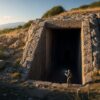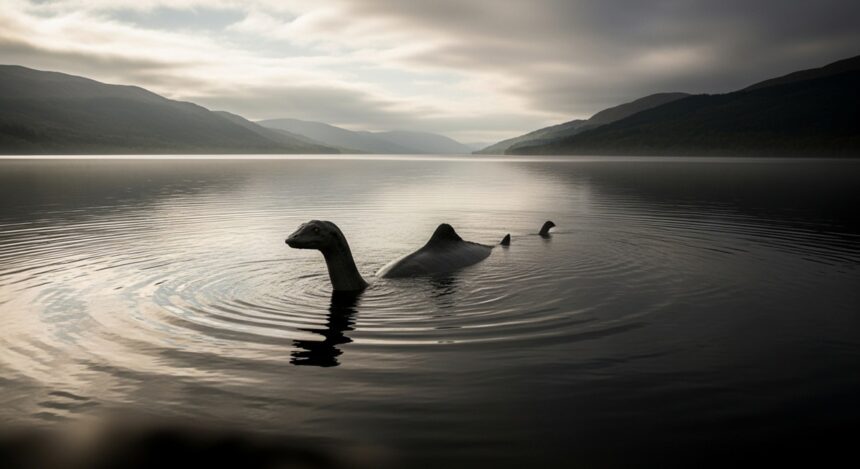The Loch Ness Monster, affectionately known as Nessie, has captivated imaginations for centuries, blending folklore, science, and mystery into a singular enigma. Recent claims of a sighting in a Google Earth image have reignited global curiosity, with enthusiasts and skeptics alike diving into the debate.
A shadowy, elongated figure, allegedly spotted at coordinates 57°15’25″N 4°29’29″W, has sparked speculation about whether this could be the legendary creature of Scotland’s Loch Ness.
A New Sighting from Space: The Google Earth Revelation
In July 2025, Scott C. Waring, a self-described ufologist and virtual explorer, announced a startling discovery on his blog, UFO Sightings Daily. While scouring Google Earth’s satellite imagery, Waring claimed to have spotted an elongated, snake-like object in Loch Ness, measuring approximately 20 meters in length. Positioned near a boat, the object appeared to trail behind, its sinuous form contrasting sharply with the loch’s dark waters. Waring’s coordinates (57°15’25″N 4°29’29″W) allow anyone to view the image on Google Earth, and indeed, a curious shape is visible, fueling excitement among Nessie enthusiasts.
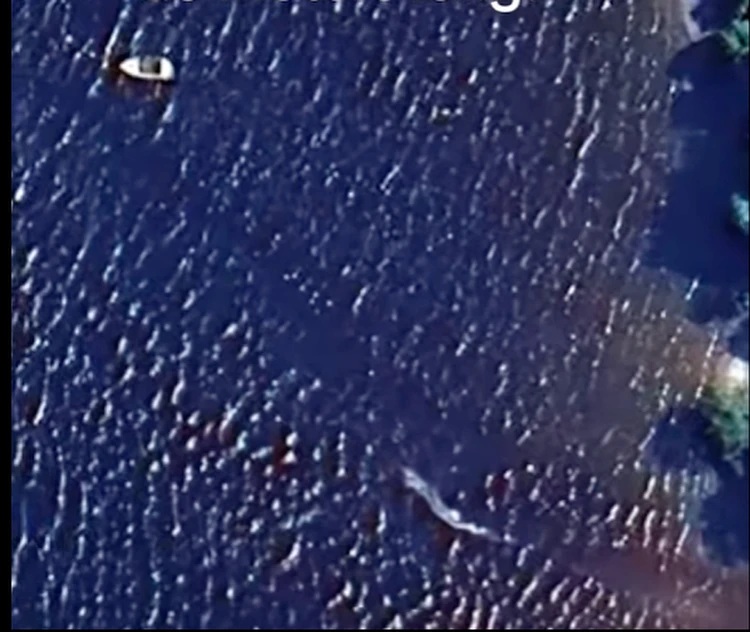
This isn’t the first time satellite imagery has stirred Nessie speculation. In 2009, a similar Google Earth sighting at coordinates 57°12’52.13″N, 4°34’14.16″W showed what appeared to be a large object in the loch, though many dismissed it as a boat wake. The latest image, however, has rekindled debate, with Waring asserting that the object’s shape and size suggest something extraordinary. Could this be the clearest evidence yet of Nessie’s existence, or is it another case of misidentification?
Scott C. Waring: The Virtual Explorer
Scott Waring is no stranger to bold claims. Known for spotting anomalies in images from Mars, the Moon, and beyond, he has built a following by uncovering what he believes are extraterrestrial or paranormal phenomena. His pivot to Earth-bound mysteries like Nessie showcases his knack for finding intrigue in the familiar. Waring’s method involves meticulous analysis of publicly available satellite imagery, a process he calls “virtual archaeology.” While critics question his interpretations, his findings consistently spark discussion, drawing attention to overlooked details in places like Loch Ness.
In this case, Waring’s discovery has prompted thousands to zoom in on Google Earth, scrutinizing the same coordinates. The image shows a boat and, to its left, a long, winding shape that could be interpreted as a creature—or something far more mundane. The ambiguity is what makes it compelling, as it invites viewers to project their own beliefs onto the pixelated form.
The Loch Ness Monster: Legends and Evidence
Loch Ness, a 23-mile-long freshwater lake in the Scottish Highlands, is the largest loch by volume in the UK, holding more water than all the lakes in England and Wales combined. Its murky, peat-filled depths create an ideal setting for mystery, obscuring visibility and fueling tales of a hidden creature. Nessie first captured global attention in 1933, when a sighting reported in the Inverness Courier described a large, unidentified object disturbing the loch’s surface. Since then, over 1,000 sightings have been logged, ranging from fleeting glimpses to detailed accounts.
The Iconic “Surgeon’s Photograph”
The most famous image of Nessie, the 1934 “Surgeon’s Photograph,” showed a long-necked creature emerging from the water, resembling a plesiosaur. Decades later, it was revealed as a hoax, constructed using a toy submarine and a sculpted head. Despite this, the photograph cemented Nessie’s image as a prehistoric survivor, possibly a plesiosaur—an aquatic reptile thought to have gone extinct 66 million years ago. This idea persists among enthusiasts, even as skeptics point to the lack of fossil evidence for such creatures in Loch Ness.
Recent Sightings: Sonar and Submarines
Beyond satellite imagery, other sightings have kept the Nessie myth alive. In 2024, Scottish skipper Shaun Sloggie and sailor Liam McKenzie reported a sonar reading showing a large, elongated object at a depth of 98 meters—too large to be a fish and not resting on the lakebed. The sonar image suggested a creature with a long neck and flippers, aligning with the plesiosaur theory. Earlier, in 2019, the Ness Fishery Board’s underwater camera captured a snake-like form, estimated to be over 10 meters long, further complicating the creature’s identity.
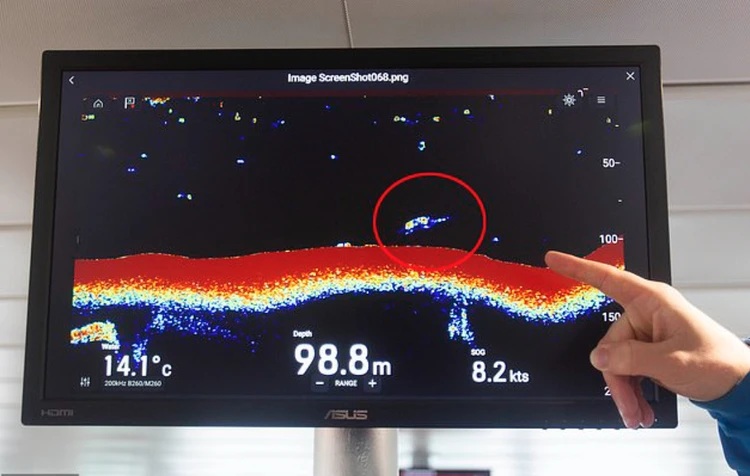
These accounts contrast with Waring’s snake-like Google Earth find, raising questions about whether Nessie could take multiple forms or if these are distinct phenomena. The sonar data, in particular, has intrigued researchers, as it suggests a physical object too large for known local wildlife.
Plesiosaur or Sea Serpent? The Identity Debate
The Google Earth image’s snake-like form challenges the traditional view of Nessie as a plesiosaur. Plesiosaurs, with their bulky bodies, flippers, and long necks, don’t match the slender, winding shape Waring identified. Instead, some speculate that Nessie could resemble a “sea serpent,” a creature reported in maritime folklore worldwide. This idea aligns with historical accounts of serpentine monsters in lakes and oceans, from Scotland’s Loch Ness to Canada’s Lake Okanagan.
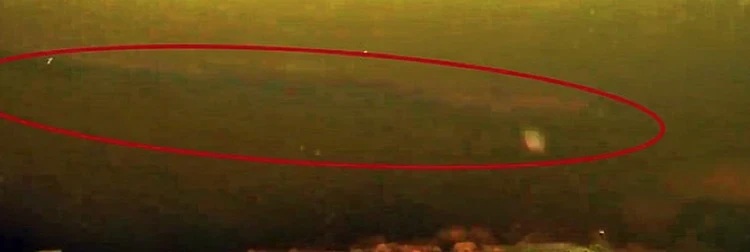
Scientific Explanations: Eels, Logs, and Wakes
Skeptics offer more grounded explanations. In 2019, a team from New Zealand’s University of Otago suggested that Nessie sightings could be attributed to giant eels. Loch Ness is home to European eels, some of which can grow to significant sizes, though none have been documented at the 10-20 meter lengths reported in sightings. Other theories point to floating logs, otters, or boat wakes creating illusions of a creature. The 2009 Google Earth sighting, for instance, was widely debunked as a boat wake, with the boat itself faintly visible in the image.
Satellite imagery, as noted in Remote Sensing and Image Interpretation, can be misleading due to unfamiliar perspectives, wavelengths, and resolutions. The human brain is prone to pareidolia, the tendency to see familiar shapes—like monsters—in ambiguous patterns. This could explain why Waring’s find looks so compelling at first glance.
The Plesiosaur Hypothesis
Despite skepticism, the plesiosaur theory remains popular. Enthusiasts argue that a small population of these ancient reptiles could have survived in Loch Ness, sustained by its deep, nutrient-rich waters. However, scientists counter that the loch’s ecosystem couldn’t support a breeding population of large predators. Loch Ness’s cold temperatures and limited fish stocks make it an unlikely habitat for a plesiosaur, which would require substantial food to sustain its size.
Nessie and the Power of Mystery
Nessie’s allure lies not just in the possibility of a real creature but in what the legend represents. As Google noted in a 2015 blog post, Nessie “transcends the everyday and exists at the edges of possibility.” The monster embodies humanity’s fascination with the unknown, from ancient sea serpent tales to modern cryptozoology. Loch Ness attracts over 200,000 searches monthly, outpacing interest in landmarks like Buckingham Palace.
The loch itself is a character in this story. Its 800-foot depth and murky waters create a natural canvas for imagination, where light, shadows, and ripples can mimic a creature’s form. Adrian Shine, leader of the Loch Ness and Morar Project, has cataloged over 1,000 sightings and attributes many to natural phenomena like boat wakes or diving birds. Yet even he acknowledges the legend’s cultural power, noting that Nessie “lives in the telling of stories.”
Tourism and Cultural Impact
Nessie is a cornerstone of Scottish tourism, drawing visitors to the Highlands and inspiring everything from souvenirs to submarine tours. The Loch Ness Monster Fan Club and local businesses thrive on the mystery, with sightings boosting interest in cruises and sonar expeditions. The 2008 underwater search using sonar and cameras found no definitive evidence, but it didn’t dampen enthusiasm. Each new sighting, like Waring’s, keeps the legend alive, ensuring Loch Ness remains a global fascination.
Investigating the Google Earth Image
To explore Waring’s claim, I visited Google Earth and entered the coordinates 57°15’25″N 4°29’29″W. The image shows a boat with a faint wake and, nearby, a long, sinuous shape that could be interpreted as a creature. The object’s clarity depends on the zoom level and lighting, which can distort perceptions. Compared to the 2009 sighting, which was clearly a boat wake, this image is less conclusive. The object’s length and shape don’t perfectly align with a wake, but they also don’t definitively scream “monster.”
Could It Be Nessie?
The snake-like form in the image could be a large eel, a log, or even a shadow cast by clouds. The loch’s peat content makes underwater photography challenging, so satellite images are often our best glimpse of its surface. Yet, as biologist Andrew David Thaler noted, satellite images aren’t real-time and can be distorted by overlays or atmospheric conditions. Without higher-resolution data or corroborating evidence, Waring’s find remains intriguing but inconclusive.
The Future of Nessie Research
Advancements in technology, from drones to underwater robots, offer new ways to probe Loch Ness’s depths. The 2015 Google Street View project, in collaboration with the Catlin Seaview Survey, mapped the loch’s underwater terrain, finding no monsters but revealing its haunting beauty. Future expeditions could use AI-enhanced imaging or environmental DNA sampling to detect unknown species. For now, Nessie remains elusive, her existence hinging on grainy images and tantalizing anecdotes.
A Call to Curious Minds
Whether Nessie is a plesiosaur, a giant eel, or a figment of our collective imagination, the Loch Ness Monster continues to inspire wonder. Waring’s Google Earth discovery is a reminder that even in an age of satellites and science, some mysteries are here to stay. Visit the coordinates yourself, explore the loch’s shadowy waters, and decide what you believe. Is Nessie out there, lurking just beneath the surface? Or is she a story we tell to keep the unknown alive?


